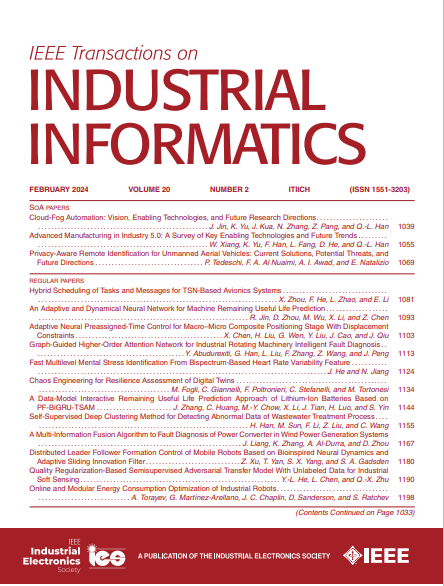基于约束学习的图-时间卷积网络的机组承诺问题电力调度预测
IF 9.9
1区 计算机科学
Q1 AUTOMATION & CONTROL SYSTEMS
引用次数: 0
摘要
机组承诺(UC)是电力系统调度部门的重要组成部分。目前解决UC问题的方法主要依赖于混合整数线性规划,并辅以数据驱动方法。这些方法有两个主要的局限性:首先,随着电网规模的扩大,算法的复杂性急剧增加。其次,它们不能充分利用网格拓扑信息和历史数据趋势。为了解决这些限制,本文提出了一个约束图-时间卷积网络,该网络通过直接预测具有约束的功率输出来解决UC问题。该算法以网格节点的历史负荷数据为输入,利用图卷积网络捕获物理网格拓扑信息,利用时间卷积网络提取时间特征。最终,通过线性约束激活层将图-时间卷积网络的输出投影到可行域,实现准确的功率预测。在IEEE 30-BUS和IEEE 118-BUS系统上进行的实验验证了该方法在精度和计算效率方面的可行性和优越性。本文章由计算机程序翻译,如有差异,请以英文原文为准。
Predicting Power Dispatch for Unit Commitment Problems Using Graph-Temporal Convolutional Networks With Constrained Learning
Unit commitment (UC) is a critical component for the power system dispatching departments. Current methodologies for solving UC problems predominantly rely on mixed-integer linear programming and are supplemented by data-driven approaches. These methodologies have two primary limitations: first, as the scale of the power grid expands, the complexity of algorithms increases sharply. Second, they fail to fully exploit grid topology information and historical data trends. To address these limitations, this article proposes a constrained graph-temporal convolutional network, which addresses the UC problem by directly predicting power output with constraints. The algorithm takes historical load data from grid nodes as input, utilizes graph convolutional networks to capture the physical grid topology information, and employs temporal convolutional networks to extract temporal features. Ultimately, the output of the graph-temporal convolutional network is projected into the feasible domain through a linear constraint activation layer, achieving accurate power prediction. Experiments conducted on the IEEE 30-BUS and IEEE 118-BUS systems validate the feasibility and superiority of our method in terms of accuracy and computational efficiency.
求助全文
通过发布文献求助,成功后即可免费获取论文全文。
去求助
来源期刊

IEEE Transactions on Industrial Informatics
工程技术-工程:工业
CiteScore
24.10
自引率
8.90%
发文量
1202
审稿时长
5.1 months
期刊介绍:
The IEEE Transactions on Industrial Informatics is a multidisciplinary journal dedicated to publishing technical papers that connect theory with practical applications of informatics in industrial settings. It focuses on the utilization of information in intelligent, distributed, and agile industrial automation and control systems. The scope includes topics such as knowledge-based and AI-enhanced automation, intelligent computer control systems, flexible and collaborative manufacturing, industrial informatics in software-defined vehicles and robotics, computer vision, industrial cyber-physical and industrial IoT systems, real-time and networked embedded systems, security in industrial processes, industrial communications, systems interoperability, and human-machine interaction.
 求助内容:
求助内容: 应助结果提醒方式:
应助结果提醒方式:


